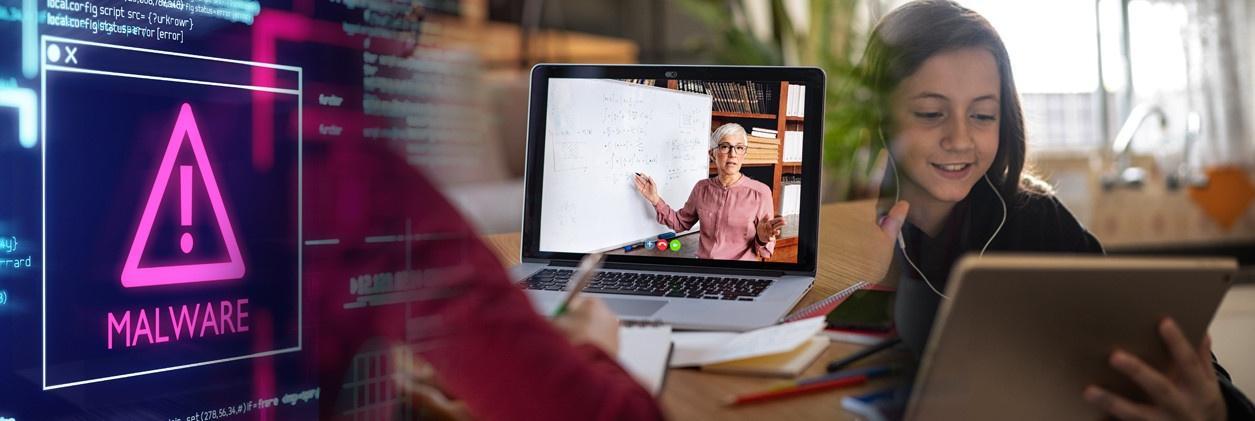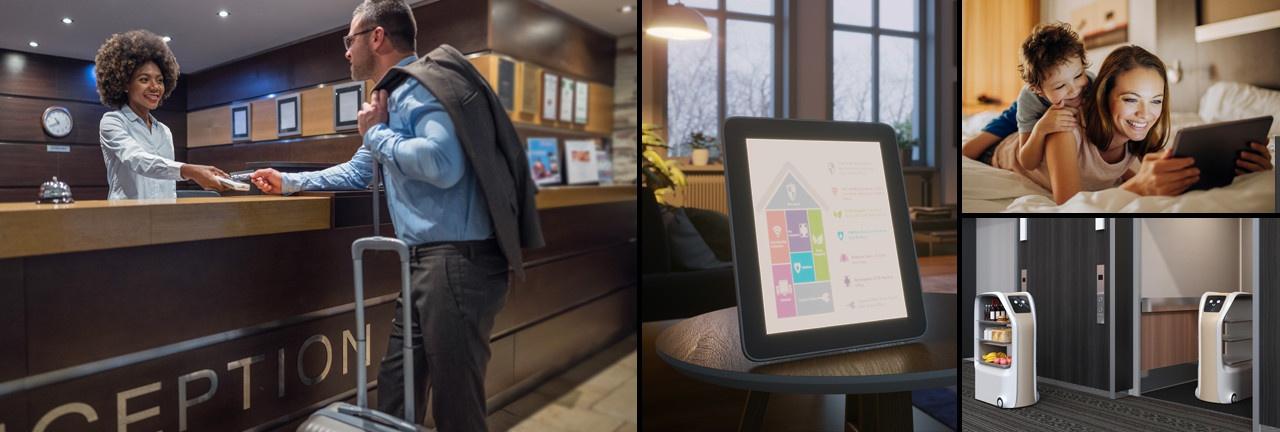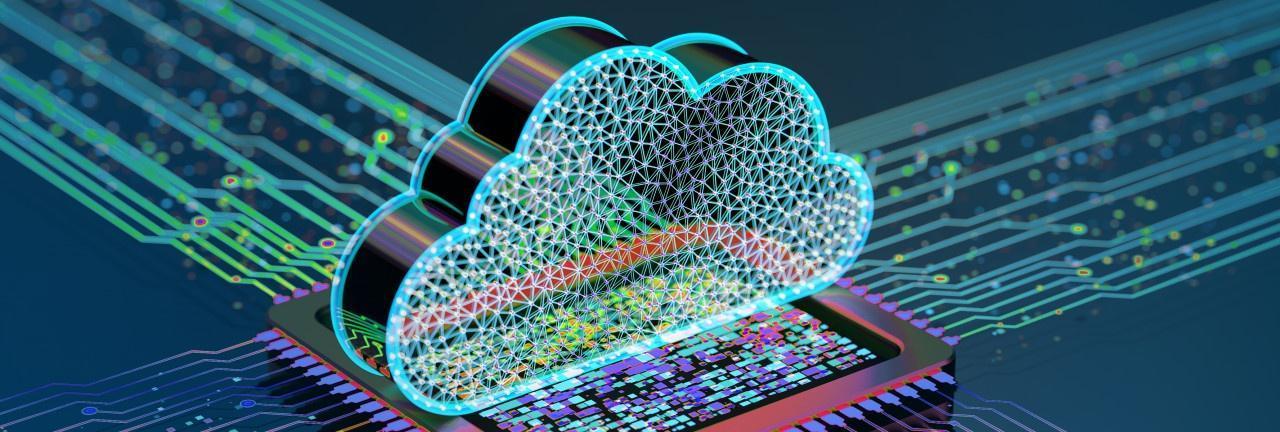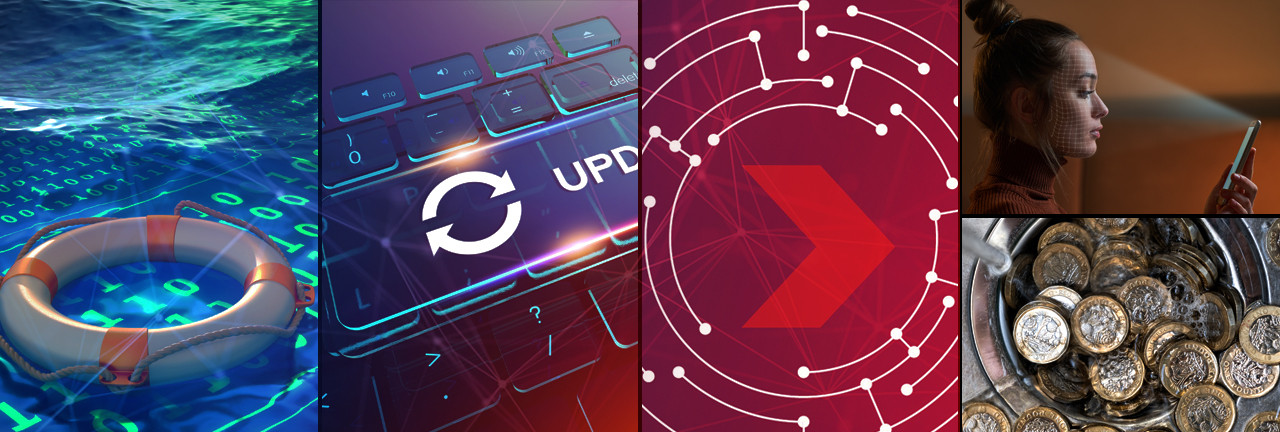The past year has challenged the UK's education sector in ways that would previously have been inconceivable, with children learning from home the majority of the time since March.
With the flexible office model slowly but surely supplanting the traditional working environments in favour of dynamic co-working spaces for a number of years now, we have seen many organisations reconsider the way they think about commercial real estate.
The finance sector is required to have one of the most sophisticated cyber security postures in the world, with bureaus, banks, finance companies and insurers working closely with their technology partners to ensure sensitive financial data is managed, stored and transferred, with a stringent range of international security standards that must be adhered to at all times. However, cyber criminals have demonstrated repeatedly that they are constantly working to breach even the most sophisticated security ecosystems, devising new ways to exploit both technological vulnerabilities and human error.
The past year of upheaval in the digital landscape has created a number of singular challenges for the Legal sector, in addition to firms' longstanding obligations around security and data governance.
As students finally make their long-awaited return to the classroom, it is important that schools, colleges, and other institutes of education do not lose sight of the increasingly complex cyber security landscape they must navigate, and ensure the lessons learned throughout lockdown continue to be acted upon.
There's no doubt that the past two years have challenged the Hospitality & Leisure sectors in ways that would previously have been unimaginable, with social distancing requirements limiting the number of guests who can be hosted and making familiar processes like checking in and out significantly more complex. But, like every sector impacted by the pandemic, these challenges have inspired a new wave on innovation, as IT infrastructure has evolved to support staff and guests alike, ensuring safety does not have to come at the expense of an enjoyable stay.
Let's consider some of the ways the challenges of COVID-19 have impacted the Hospitality & Leisure sector, and how the lessons learned can - in the long term - open up new opportunities to deliver truly unforgettable experiences for every guest…
Ever since the Cloud as a concept entered the public consciousness, concerns about its perceived cyber security weaknesses have been a major obstacle to organisations - and, indeed, entire sectors - embracing digital transformation. The AEC sector, in particular, has traditionally been slow to begin the process of Cloud transformation, although the number of future-minded firms phasing out their legacy systems and embracing the scalability, agility, and operational resilience the Cloud has to offer in recent years indicates that we are seeing a shift in this regard.
After several years of serious global upheaval, it is clear that resilience, agility, and the ability to adapt to the unexpected are critical priorities for all organisations – regardless of size or sector. However, this accelerated pace of change has, in many cases, revealed the limitations of existing IT services. With an increasing emphasis on on-demand services and a highly fluid workforce, legacy services and their systems often struggle to support new propositions and customers' evolving needs, which will – in turn – make maintaining a competitive advantage difficult, if not near impossible.
On the 18th March 2024, the Information Commissioner's Office issued its updated guidance around the issuing of fines when organisations have been found liable for the integrity of their customers' or end users' data being compromised. It is already well-established now that failure to ensure critical data remains secure will result in costly fines, as we have seen repeatedly in multiple high-profile cases over the years.
Whatever sector you operate in and whatever your long-term business goals, your network is the foundation of your future success. With the distributed workforce now firmly established and customer interactions taking place over an evolving range of channels, business is now truly interconnected, with seamless, secure dataflows its lifeblood.
The security of enterprise networks is a critical priority for all organisations across the public and private sectors, as they are forced to contend with an increasingly turbulent cyber threat landscape. As a result, network teams increasingly find their roles overlap with their organisations' cyber security strategies, with numerous siloed elements now converging.
The Challenge
In Q3 of 2024, the CEO of a UK-based bank received an email from a ransomware group, informing him that the bank's data had been encrypted and would be released on the dark web unless a ransom demand was paid. Although several insurers and consultants were engaged to resolve the situation, the slow response times made it clear that an alternative approach would be needed.
Finally, in order to minimise the resulting downtime and resume operations as soon as possible, without giving in to the criminals' ransom demand, the organisation engaged Exponential-e to restore and secure their critical servers. With even the shortest period of downtime resulting in serious financial and reputational damage, a team of incident response specialists immediately began the restoration process, aiming to have the bank's systems back online in days rather than weeks.
The Solution
The restoration process began with a thorough audit of the IT ecosystem to establish which servers had been impacted, after which the affected VMs were powered down. A new, fully isolated VDC was created to store these VMs once they were recovered, along with a completely new firewall zone.
With the affected servers restored into this new VDC zone, firewalls were established to allow for the most basic access, after which malware scans were conducted. These scans continued for two days, during which the customer was granted initial access to the servers via a temporary SSL VPN with Azure MFA, allowing them to resume operations in just three days.
At this point, Zerto replication was set up for the new VMs, while Exponential-e simultaneously engaged with the third party that was conducting a forensic investigation.
Connectivity was soon re-established for the customer's other offices, at which point users were brought back online. Firewall logs were provided for the forensic team, along with initial access to VM images via vCloud Director.
Finally, a test rebuild of the affected VMs was conducted and finalised within two days, and additional firewall policies established.
Exponential-e has repeated variations of this process for multiple other organisations affected by ransomware attacks, allowing them to resume operations as quickly as possible and ensure their critical infrastructure is secured against future attacks.
The Result
Ongoing communication between all parties involved ,including a dedicated team of incident response specialists at Exponential-e with a defined action plan ensured a seamless restoration process. Day-to-day operations resumed in just seven days, without paying the criminals' ransom demand.
Don't wait for a crisis to expose the cracks, fortify your defences today. Discover how expert response turned seven days of chaos into operational recovery.
In light of numerous dramatic shifts in the geopolitical landscape in recent months, this blog has reiterated the need for organisations across all sectors to strengthen and - if necessary - reconsider their cyber security postures, in order to prepare for the anticipated attacks by global bad actors. The legal sector is no exception, particularly as these attacks are anticipated to specifically target the most high-value data.
Saving money with SD-WAN (part three)
Having debunked some of the myths surrounding SD-WAN’s money-saving properties in part one, and having provided some hypothetical examples of how it can actually save you money in part two, in the final part of this series I want to really ‘get real’ about SD-WAN.
Because once the hype has died down, and the ‘magical box’ myths are a distant memory, SD-WAN will still be there, generating tangible benefits for businesses across all industries and making them real money. A Google search will show you that SD-WAN is already a trend – there’s no getting ahead of that. But even though everybody’s talking about it, relatively few businesses are actually making the most of it. But some are – and here are three ways in which they’re doing it.
1. Economise while you globalise
For businesses, globalisation is a wellspring of opportunity, but it also creates new challenges. Many businesses have international offices that they need to connect-up - securely, reliably and cost effectively. And of course, it’s the cost effectiveness that often presents the biggest problem.
Why? Because security and reliability costs. Historically, those wishing to connect an international site or sites with full resilience have had to shell out for not one, but two international MPLS circuits (the second acting as a backup). Given the cost of international MPLS circuits, doing this isn’t exactly cheap.
Thanks to SD-WAN, though, businesses can now take a hybrid WAN approach to connecting international sites. This means using an international MPLS circuit backed up by an Internet circuit – and saving a pile of money in the process.
Before SD-WAN, running an MPLS circuit backed by an Internet circuit would have meant compromising your service. By cleverly using SD-WAN, however, we can now guarantee as good a service as an all-MPLS set-up, with as much resiliency, across a lower cost-based setup.
We do this by taking advantage of the application steering SD-WAN enables. This functionality allows us to put priority applications on the main MPLS circuit – thereby retaining the SLA and quality of service required – while mapping non-critical stuff onto an Internet line – thereby saving money.
2. Maximum security, minimum cost
With threat vectors multiplying as the Internet of Things emerges and businesses move more and more of their operations into the Cloud, cyber security has arguably never been so important to get right - or so challenging. And for businesses in possession of more than one office or site, there are obviously additional challenges; security can be extremely complex and expensive to set-up and maintain across multiple sites.
If you’ve got twenty offices, for example – that’s twenty physical firewalls that need to be installed and supported, with twenty different support contracts. And even once those firewalls are set up, if you want to roll out a new policy or software upgrade, that’s twenty separate upgrades you need to devote money and man-hours to. It’s making me tired just thinking about it! By the way, twenty offices might sound like a lot to some businesses, but could actually be quite a modest number by the standards of (for example) some retailers, some of whom have hundreds of sites to oversee and secure.
Transferring to a cloud-based security service will eliminate many of these headaches, and SD-WAN is arguably the best way to go about it. With SD-WAN, you get single-pane-of-glass visibility and control over your entire network, including all devices and endpoints (which SD-WAN networks authenticate with scalable key-exchange functionality and software-defined security). You’ll be able to roll out updates, configurations, patches and policies at the touch of a button, and - what’s more - you won’t even have to set-up physical firewalls in the first place!
3. An access all areas pass for businesses
For many businesses, there are times when sites need to be set up so quickly that connecting them up to the business’s main network isn’t an option. For construction and retail businesses, this is an increasingly familiar challenge: both routinely have to set up a porta-cabin site or pop-up store without access to fixed-line connectivity. In these situations, there’s unlikely to be space for hardware. Very likely there’s no IT staff on-site. It could also be a short-term implementation, making it difficult to install hardware in time to make it cost effective.
Once again, SD-WAN comes to the rescue! Because SD-WAN can be accessed through just about any access mechanism – from Ethernet to 4G data – you can use it to get up and running in no time at all. A retailer armed with SD-WAN can set up a pop-up shop and connect via 4G, and can switch to a more robust access point – at which time 4G becomes the backup as and when it becomes available.
Supplementing the savings in hardware costs will be the increased revenue businesses can expect to generate by eliminating delays in setting up. The agility SD-WAN’s flexibility gives to businesses also means they can set-up in a wider range of locations – and that equates to even more potential revenue.
The bottom line: the sky’s the limit
So there you have it – three examples of how businesses are proving that SD-WAN is more than just hype, and that the savings you can make using it are real and tangible. And these are only three examples, and this is only really the beginning. Ultimately, the control SD-WAN gives businesses over their network management means that the only limit to the ways in which it can save them money is the limit of network experts’ ingenuity.
Thanks for reading this blog series. We would love to hear your feedback on the blogs, any questions you might have, and any thoughts you yourself have on SD-WAN and its capacity to positively impact a business’s bottom line. Please leave comments below this blog or on social media, and let’s get the conversation started!
In the meantime, you can learn more about SD-WAN on our website
Software Defined WAN, or SD-WAN for short, is the new big thing in business networking. Everybody's talking about SD-WAN, and about what it can do for businesses. Well, there's no doubt that SD-WAN can do a lot for your business; in fact, we'll be talking about exactly that in part 2 of this 3 part blog series. But before we do that, we need to talk about what SD-WAN can't do. Right now there's a popular misconception among businesses concerning SD-WAN - a misconception fed and sustained by headlines and marketing hype - that could lead them to take damaging shortcuts in incorporating SD-WAN into their business.
Despite the numerous interconnected elements now involved in effective digital transformation, the network remains the foundation of everything, ensuring any investment in new technologies delivers the best possible ROI, and that teams at all levels are empowered to deliver their very best, 24 / 7. As such, the digital transformation journey must always begin with a full network transformation.
Secure Access Service Edge (SASE) represents an elegant convergence of network and security technologies as a single, end-to-end solution, perfectly suited to the modern distributed workforce and the increasingly dynamic nature of corporate networks. As a growing number of organisations are discovering, SASE has the potential to completely transform the way we design, deploy, manage, and scale corporate networks. Indeed, 60% of IT leaders are ready to fully embrace SASE by 2025*.
To Test or Not to Test? - When it comes to IT disaster recovery and remediation processes, regular testing is not a 'nice to have' - it's absolutely essential!
This isn't hyperbole on my part. You just have to look at the news on any given day. We've all heard the horror stories of organisations in both the public and private sectors experiencing prolonged downtime during disasters due to inadequate preparation, lack of testing, and the unsuitability of their legacy remediation processes and systems.





















